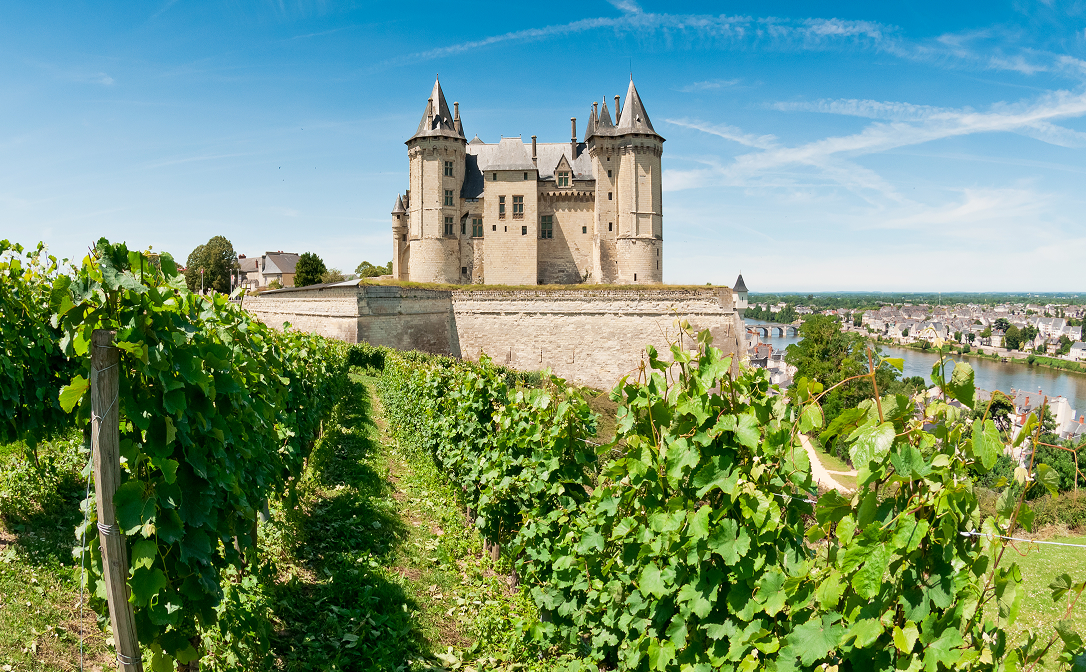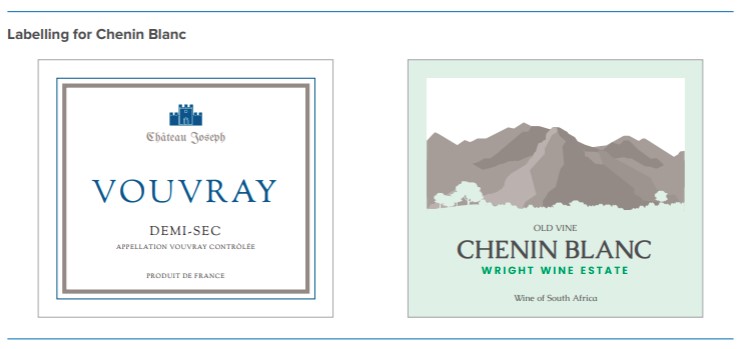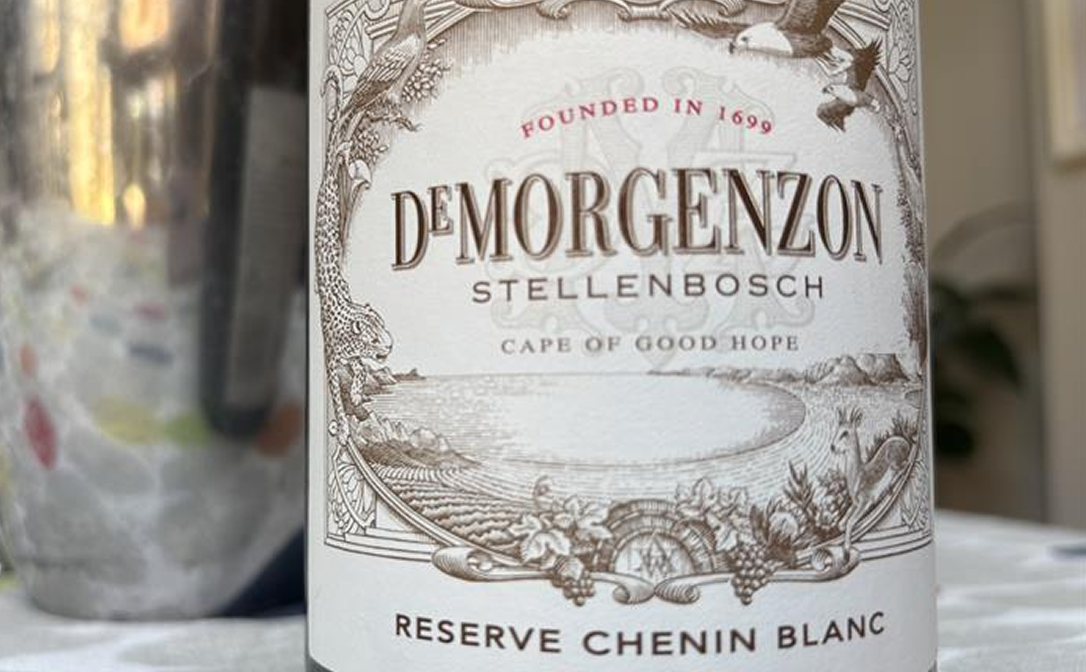International Drink Chenin Blanc Day is the perfect occasion to celebrate one of the world’s most versatile and intriguing grape varieties. Although sources differ on the exact date—some citing the second Saturday of June, others the third Friday—there’s no shortage of styles to enjoy.
If you’d like to take part, simply open a bottle and use #DrinkChenin when posting on social media. You’ll have a wealth of options at your disposal, as Chenin can be used to produce dry, sweet and sparkling wines. It grows well in cool, moderate and warm climates, and its flavours vary according to ripeness.
Let’s take a deeper look into what makes this grape so special. You can then find the right bottle to toast International Drink Chenin Blanc Day.
For an in-depth look at a variety of grape varieties, register now for our Level 2 Award in Wines.
An introduction to Chenin Blanc
Chenin Blanc is a white grape variety that originated in France. It thrives in a range of climates, but it’s primarily grown in the Loire Valley and South Africa. Chenin has naturally high acid levels, which make it suitable for late harvesting, and it’s also prone to botrytis (noble rot).
This non-aromatic grape can be used to produce a broad range of wines, as the flavours will depend upon when it’s picked. Both oaked and unoaked styles are produced. Chenin’s high level of acidity means that it has excellent ageing potential, resulting in some truly outstanding wines.
Understanding the grape: origins and traits
Chenin Blanc hails from the Loire Valley in France, where it has been cultivated since at least the 9th century. Some locals refer to it as Pineau de la Loire.
The grape’s acidity gives winemakers a great deal of flexibility. However, it’s a challenging grape to manage.
It’s common for grapes to reach different levels of ripeness, even within the same bunch. The vignerons need to be careful during the harvest, as it can result in green, herbaceous aromas if they don’t exclude unripe grapes.

Chateau de Saumur in the Loire Valley.
Key characteristics and flavour profile
What can you expect from a glass of Chenin Blanc? The answer depends on three key factors:
- Where it’s grown.
- When it’s picked.
- How the wine is made.
Chenin Blanc wine will often have flavours of green apple and lemon if it’s picked early. This is a common characteristic of Chenin from Vouvray AOC.
If the grapes are allowed to ripen, Chenin can offer notes of stone fruit and tropical fruit, such as peach, pineapple and mango. These flavours are common in South African Chenin Blanc. If it’s oaked, you may also find notes of smoke and vanilla.
Sweet, botrytised wines often have powerful apricot and lemon peel flavours. With age, they become richer and rounder, developing aromas of honey and toast. These flavours offer the perfect counterbalance to Chenin’s acidity.
What are the different styles of Chenin Blanc?
One of the great joys of Chenin Blanc is its stylistic breadth:
- Dry Chenin Blanc: These wines are often crisp, with notes of lemon, grapefruit, fresh apple and potentially stone fruits. Dry Chenin can also have a steely, smoky character. The dry wines from the Loire often show terrific balance, with refreshing acidity and minerality. In cooler areas like Savennières, the wines are structured and age-worthy, often evolving beautifully over decades.
- Off-dry Chenin Blanc: A touch of residual sugar is maintained, which balances Chenin’s natural acidity. These Chenin Blanc styles are more rounded, with stone fruit and a floral character. Vouvray Demi-Sec is a classic example.
- Sweet Chenin Blanc: This is where the grape really dazzles. In areas like Coteaux du Layon and Quarts de Chaume in the Loire, late-harvest and botrytised grapes produce golden wines, which are rich in honey, apricot and marmalade notes. These luscious wines can often age gracefully for 50 years or more.
Sparkling Chenin Blanc
The Loire Valley is the second-largest sparkling wine region in France. The region produces three renowned sparkling wines:
Sparkling Saumur: These wines are made from Chenin Blanc, Chardonnay, Cabernet Franc and a range of local varieties.
Sparkling Vouvray: The vast majority is made solely from Chenin Blanc, making it an ideal choice for anyone celebrating International Drink Chenin Blanc Day.
Crémant de Loire: These wines are famous for offering the classic fizz and zest of Champagne, but at a significantly lower price. Crémant de Loire is the regional appellation for sparkling wines from Anjou, Saumur and Touraine. Some are made from 100% Chenin Blanc. Others primarily use Chenin, but they may also contain Chardonnay, Cabernet Franc, Cabernet Sauvignon and Pineau d'Aunis.
Ageing Potential and Winemaking Influence
Chenin Blanc’s high acidity and structure mean that even dry styles can age remarkably well. With time, the fruit softens and integrates with tertiary notes of nuts, spices, beeswax, honey and dried fruits.
Winemaking decisions play a major role:
Oak ageing adds texture, spice and richness, with notes of toast and vanilla.
Lees ageing enhances creaminess and complexity.
Malolactic fermentation can soften acidity and introduce buttery notes.
These choices allow winemakers to tailor Chenin Blanc to a wide range of preferences, from crisp and mineral to opulent and textured. Meanwhile, bottle ageing can result in honey and dried fruit aromas in Chenin Blanc.
Major wine regions for Chenin Blanc
Chenin is grown across the world, but it’s primarily planted in the Loire Valley and South Africa.
Loire Valley: The birthplace of Chenin Blanc
France’s Loire Valley remains the spiritual home of Chenin Blanc. Vouvray AOC makes a great starting place for anyone exploring Chenin, as it’s the only variety permitted there.
Vouvray produces a range of styles: dry, off-dry, medium, sweet and sparkling wines. These Chenin Blanc styles are typically unoaked, allowing them to retain their fresh fruit characteristics.
Chenin Blanc is also responsible for the greatest white wines of both Touraine and Anjou-Saumur. Touraine has a cool climate, often resulting in fresh, floral wines, with Chenin Blanc tasting notes of citrus and straw, plus high acidity and chalky minerality.
Anjou is renowned for dry wines, which are sometimes aged in new oak. This area has a relatively warm, dry climate compared to Touraine, and the wines are often medium to full-bodied. Within Anjou, Savennières is noted for its dry Chenin Blanc wines, while the Coteaux du Layon is famous for producing sweet wines, including the botrytized wines of Bonnezeaux and Quarts de Chaume.

South Africa: a new perspective
Chenin Blanc is the most widely planted grape variety in South Africa. It was once used primarily for cheap and cheerful bulk wines. However, it’s now one of South Africa’s flagship grapes, with a growing reputation for quality.
South African winemakers prize Chenin for its ability to retain high levels of acidity in a warm climate. At a basic level, Chenin produces easy-drinking wines with simple stone fruit flavours. These wines typically use grapes from warmer inland areas, and they’re often blended with Chardonnay.
However, many producers are now using old bush vines to produce complex Chenin Blanc wines, with more concentrated flavours and a fuller texture. These wines can have pronounced aromas of pineapple and mango, while oak ageing adds vanilla and smoke.

A Chenin Blanc produced in Stellenbosch, South Africa.
Other Notable Regions
While France and South Africa lead the way, several other regions are making noteworthy Chenin Blanc:
California: Some older vines remain in areas like Clarksburg and the Sierra Foothills, producing ripe, tropical, off-dry wines.
Australia: Small plantings in Western and South Australia are showing promise with both dry and sparkling styles.
Argentina and New Zealand: Emerging players offering fresh, fruit-forward takes on the grape.
Embrace the Diversity
There’s a Chenin Blanc style for almost every palate and occasion. You can enjoy a crisp, refreshing Chenin as an aperitif, pop the cork on a world-class sparkling wine, or pair a sweet wine with blue cheese for dessert.
International Drink Chenin Blanc Day is the ideal occasion to explore this beloved grape variety. Revisit an old favourite, try a new style, or host a tasting to compare wines from different regions. You’ll be joining wine lovers around the world in raising a glass to this versatile, beguiling grape.


